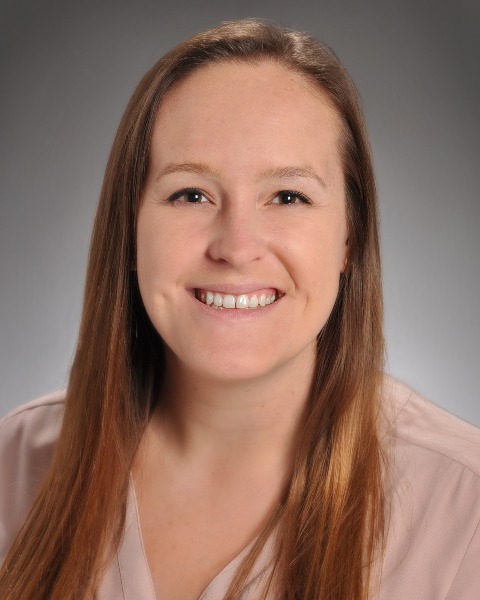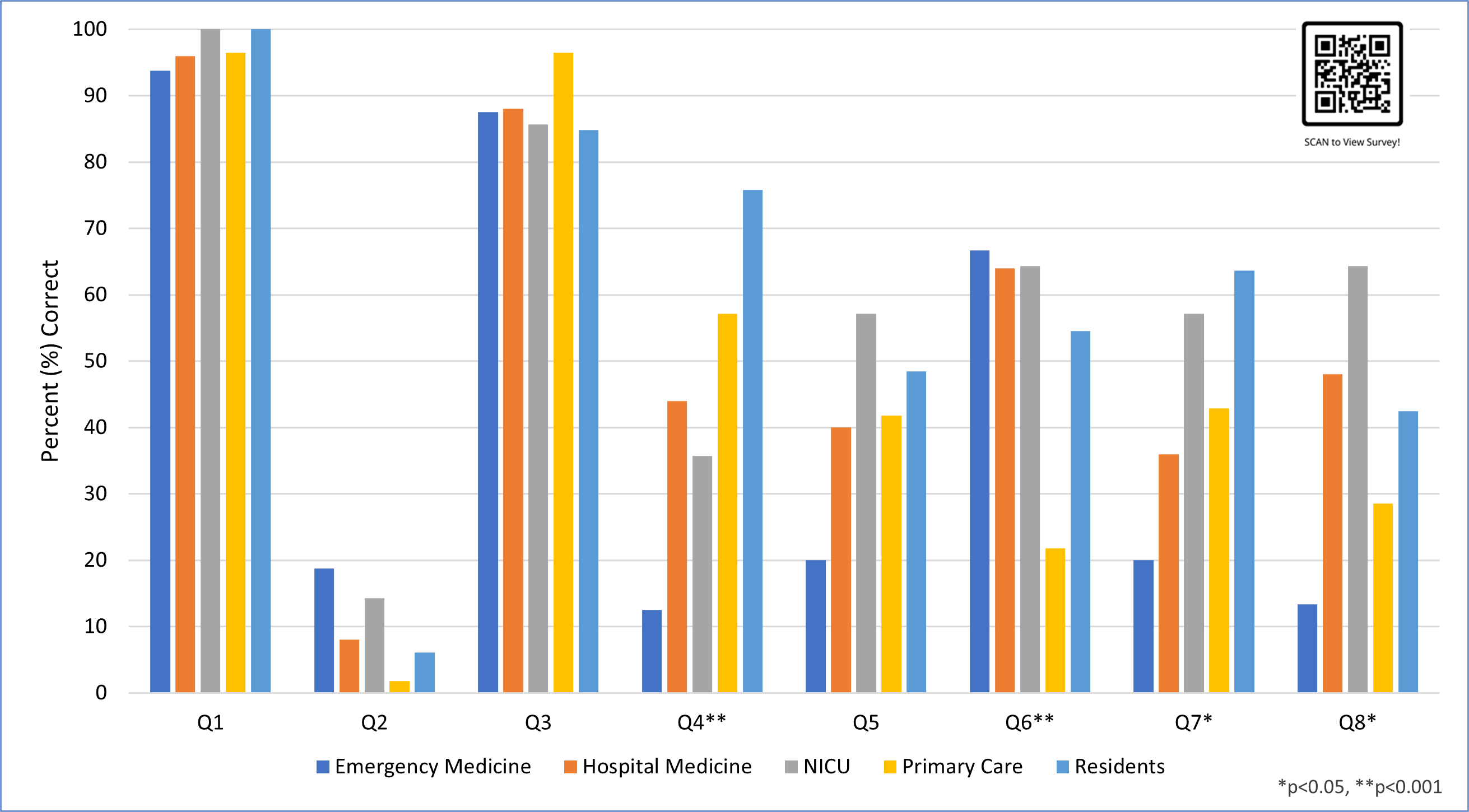Hospital Medicine: Newborn Care
Category: Abstract Submission
Hospital Medicine: Clinical - Bronchiolitis/HFNC and Newborn Care
128 - Neonatal Hyperbilirubinemia: Variability in Knowledge & Practice Habits
Monday, April 25, 2022
3:30 PM - 6:00 PM US MT
Poster Number: 128
Publication Number: 128.415
Publication Number: 128.415
Danielle M. Owerko, Medical College of Wisconsin, Wauwatosa, WI, United States; Kelsey Ryan, Medical College of Wisconsin, Wauwatosa, WI, United States; Erwin T. Cabacungan, Medical College of Wisconsin, Wauwatosa, Wisconsin/53202, WI, United States; Ke Yan, Medical College of Wisconsin, Milwaukee, WI, United States; Caitlin Hoffman, Medical College of Wisconsin, Wauwatosa, WI, United States; Kris Saudek, Medical College of Wisconsin, Milwaukee, WI, United States

Danielle M. Owerko, MD
Resident Physician
Medical College of Wisconsin
Wauwatosa, Wisconsin, United States
Presenting Author(s)
Background: Neonatal hyperbilirubinemia (NH) is a common diagnosis managed by pediatricians in various clinical settings. The 2004 American Academy of Pediatrics (AAP) Clinical Practice Guideline on NH is widely cited, but literature examining variation across pediatric specialties is limited. Assessment of current knowledge and practice habits is timely because updated AAP guidelines for management of NH are forthcoming.
Objective: To assess baseline knowledge and current practice habits regarding NH amongst pediatric providers across various specialties and clinical settings within our hospital system.
Design/Methods: A non-probability, convenience, self-selected sampling survey was developed using iterative focus group testing and electronically disseminated to 311 subjects across five different practice settings within one pediatric healthcare institution. The survey included 8 multiple choice knowledge-based questions with confidence assessments and 5 management-based questions assessing respondent agreement on a 5-point Likert scale. Surveys with at least one completed question were included for analysis. To compare groups, the Kruskal-Wallis and Mann-Whitney tests were used for continuous variables, and the Chi-square and the Fisher’s exact tests were used for categorical variables.
Results: There was a 52% (162/311) overall survey response rate. Response rates by specialty included hospital medicine (64%), emergency medicine (50%), neonatal intensive care (61%), primary care (50%), and pediatric residents (32%). Missingness in question data did not correlate with specialty or years in practice. For select questions, there were significant differences between specialties’ knowledge regarding NH (p < 0.05) (Figure 1). There were also significant differences between specialties’ confidence ratings, independent of choosing the correct response (p < 0.05) (Figure 2). For select management-based questions, there were also significant differences between specialties (p < 0.05) (Figure 3). A majority of respondents (56%) indicated phototherapy treatment thresholds should remain the same in updated management guidelines.Conclusion(s): Significant variations in knowledge and management of NH were identified between various pediatric specialties. This suggests that the dissemination of new guidelines must be inclusive across practice settings and may be an opportunity for pediatric healthcare organizations to align practice and reduce variation in care.
Figure 1. Percent (%) Correct by Specialty for Knowledge-Based Questions For select questions, there were significant differences between specialties’ knowledge regarding neonatal hyperbilirubinemia.
For select questions, there were significant differences between specialties’ knowledge regarding neonatal hyperbilirubinemia.
Figure 2. Confidence Assessments for Knowledge-Based Questions.png) There were significant differences between specialties’ confidence with regard to knowledge-based questions, independent of choosing the correct response.
There were significant differences between specialties’ confidence with regard to knowledge-based questions, independent of choosing the correct response.
Objective: To assess baseline knowledge and current practice habits regarding NH amongst pediatric providers across various specialties and clinical settings within our hospital system.
Design/Methods: A non-probability, convenience, self-selected sampling survey was developed using iterative focus group testing and electronically disseminated to 311 subjects across five different practice settings within one pediatric healthcare institution. The survey included 8 multiple choice knowledge-based questions with confidence assessments and 5 management-based questions assessing respondent agreement on a 5-point Likert scale. Surveys with at least one completed question were included for analysis. To compare groups, the Kruskal-Wallis and Mann-Whitney tests were used for continuous variables, and the Chi-square and the Fisher’s exact tests were used for categorical variables.
Results: There was a 52% (162/311) overall survey response rate. Response rates by specialty included hospital medicine (64%), emergency medicine (50%), neonatal intensive care (61%), primary care (50%), and pediatric residents (32%). Missingness in question data did not correlate with specialty or years in practice. For select questions, there were significant differences between specialties’ knowledge regarding NH (p < 0.05) (Figure 1). There were also significant differences between specialties’ confidence ratings, independent of choosing the correct response (p < 0.05) (Figure 2). For select management-based questions, there were also significant differences between specialties (p < 0.05) (Figure 3). A majority of respondents (56%) indicated phototherapy treatment thresholds should remain the same in updated management guidelines.Conclusion(s): Significant variations in knowledge and management of NH were identified between various pediatric specialties. This suggests that the dissemination of new guidelines must be inclusive across practice settings and may be an opportunity for pediatric healthcare organizations to align practice and reduce variation in care.
Figure 1. Percent (%) Correct by Specialty for Knowledge-Based Questions
 For select questions, there were significant differences between specialties’ knowledge regarding neonatal hyperbilirubinemia.
For select questions, there were significant differences between specialties’ knowledge regarding neonatal hyperbilirubinemia.Figure 2. Confidence Assessments for Knowledge-Based Questions
.png) There were significant differences between specialties’ confidence with regard to knowledge-based questions, independent of choosing the correct response.
There were significant differences between specialties’ confidence with regard to knowledge-based questions, independent of choosing the correct response.